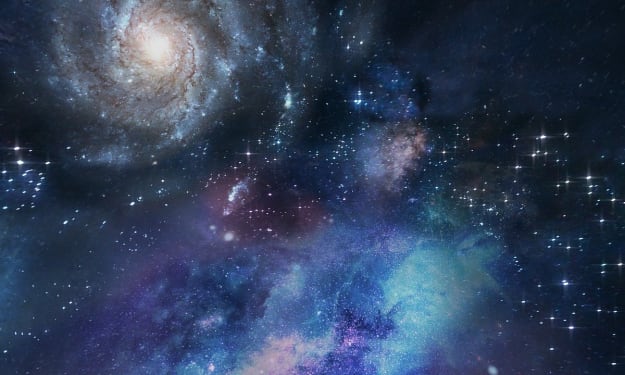Dark Matter Fools Us Yet Again
We just can’t figure out dark matter. It solves a lot of cosmological mysteries, yet it continues to elude some of our best predictions.

Dark matter gets its name because it doesn’t interact with electromagnetic fields, meaning it doesn’t produce or reflect light. Though we can’t detect it directly, astrophysicists are fairly certain it exists due to its gravitational influence. Even back in 1884, Lord Kelvin looked at the velocity of stars near the center of the Milky Way and knew their speeds couldn’t be explained by only visible matter. He reasoned that the vast majority of the matter in our galaxy was invisible. Since then, the evidence for dark matter has piled up. Today astrophysicists use it to explain everything from the rotation of galaxies to the makeup of the cosmic microwave background, as dark matter’s gravitational pull seems to be the missing piece of the puzzle. In fact, the consensus is that it comprises roughly 85% of the universe’s matter, though we still struggle to explain what it’s made of.
The problem, though, is that dark matter doesn’t always exist where it should. For example, a team of astrophysicists from the University of Bonn and the University of Saint Andrews published a study in the Monthly Notices of the Royal Astronomical Society in which they looked for evidence of dark matter halos around dwarf galaxies in the Fornax Cluster. According to the Lambda-CDM model, our most concise model of the macro-universe, most galaxies should be surrounded by a dark matter halo. These halos are thought to extend well beyond the luminous center and make up the vast majority of the galaxy’s matter, with some estimates putting the Milky Way’s dark matter halo at 95%.
The Fornax Cluster was chosen because its dwarf galaxies are in the neighborhood of several large galaxies, whose influence could be used to detect the presence or absence of dark matter halos. According to our understanding of the universe, if the halos exist, then the dwarf galaxies would be protected from tidal forces, meaning they wouldn’t be perturbed. Because the dark matter halos have such a strong gravitational influence, their existence would be enough to help the dwarf galaxies retain their shapes. Without the halos, the larger galaxies would pull, contort, or destroy their smaller neighbors.
The team calculated the expected level of disturbance for the dwarf galaxies based on their composition and proximity to the cluster’s center. The closer one is to the center and the less density it has, the more disturbed it should be. By comparing their calculations with observations from the VLT Survey Telescope of the European Southern Observatory, they were able to conclude that they were given no protection from dark matter halos. They said that the “observed deformations of dwarf galaxies in the Fornax Cluster and the lack of low surface brightness dwarfs towards its centre are incompatible with ΛCDM expectations.”
The implications of such a result are far-reaching. If dark matter halos are not as prevalent as thought, it’s possible dark matter doesn’t make up the majority of matter in the universe. It could also mean that dark matter doesn’t exist at all. If either of these are true, then we need to go back to the drawing board.
One rival explanation is Modified Newtonian dynamics or MOND. Newton’s original law of universal gravitation states that the force of attraction between two masses is inversely proportional to the square of the distance between them and directly proportional to their product. Newton presented the idea in Principia in 1687, and it quickly became one of the pillars of physics. However, in 1983 Israeli physicist Mordehai Milgrom realized that the larger-than-expected velocity of stars could be explained by tweaking this equation. He found that using the equation to calculate centripetal acceleration didn’t explain the stars’ velocities, especially those on the outskirts of galaxies. Instead, squaring centripetal acceleration produced results consistent with observations, as did treating the distance between them linearly instead of its square. Therefore, MOND provides solutions without dark matter. In fact, when the team from Bonn and Saint Andrews used Milgrom’s modified equation, they found it was “well consistent with MOND.”
Such a result is controversial. It seems to imply that not only does dark matter not exist but that the laws of classical dynamics might be wrong. Of course, this has both intrigued and annoyed the scientific community. On one hand, dark matter and classical dynamics have proven their usefulness countless times. But on the other hand, it seems we’ve found examples where they don’t work. What all this means is hard to say. What’s certain, though, is that dark matter, if it exists, will continue to be a tricky opponent for the foreseeable future. The authors of the study believe the idea of dark matter might finally be put to rest.
Originally published at http://thehappyneuron.com on August 15, 2022.
About the Creator
The Happy Neuron
Stimulating articles to make your brain happy. http://thehappyneuron.com/






Comments
There are no comments for this story
Be the first to respond and start the conversation.